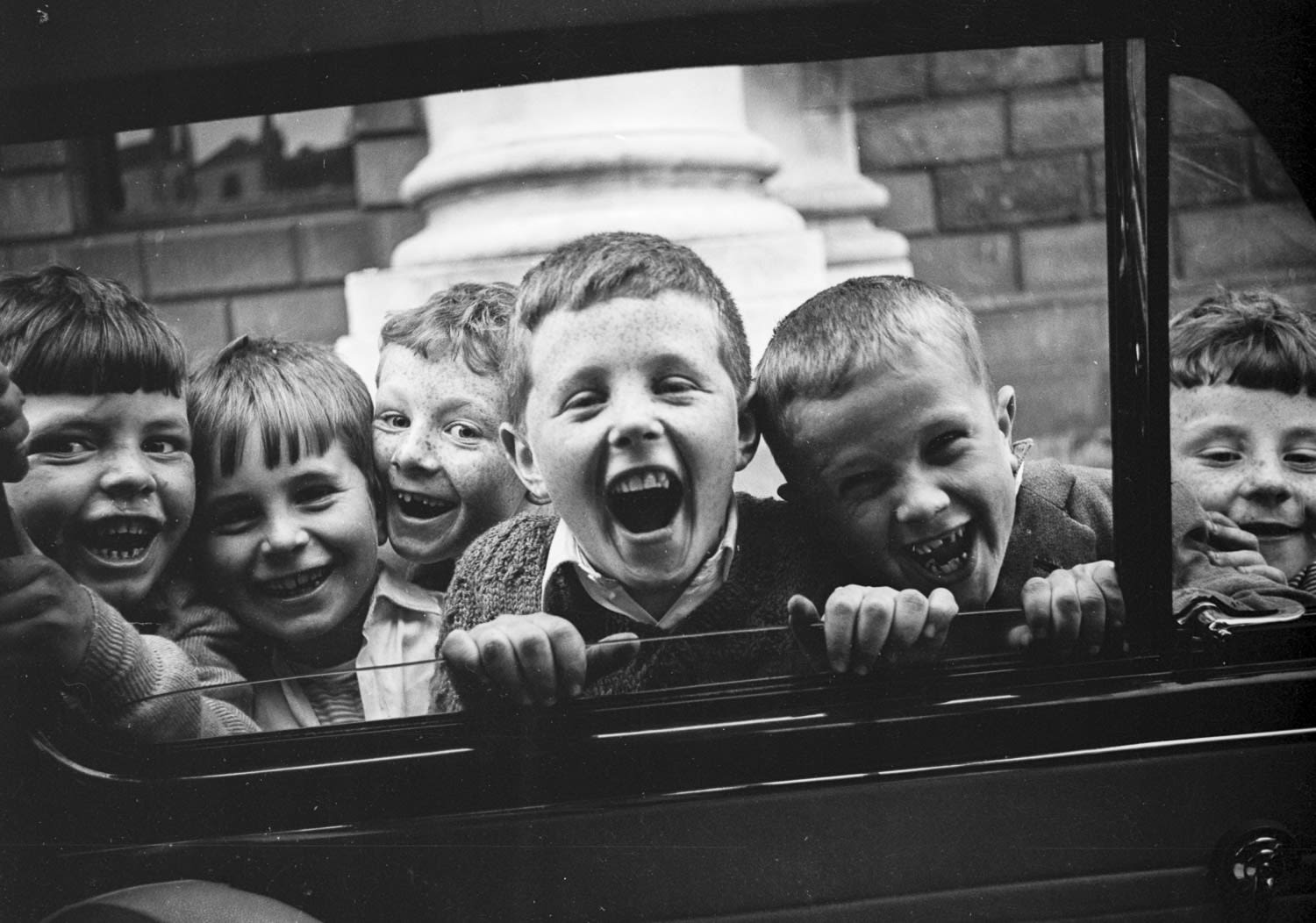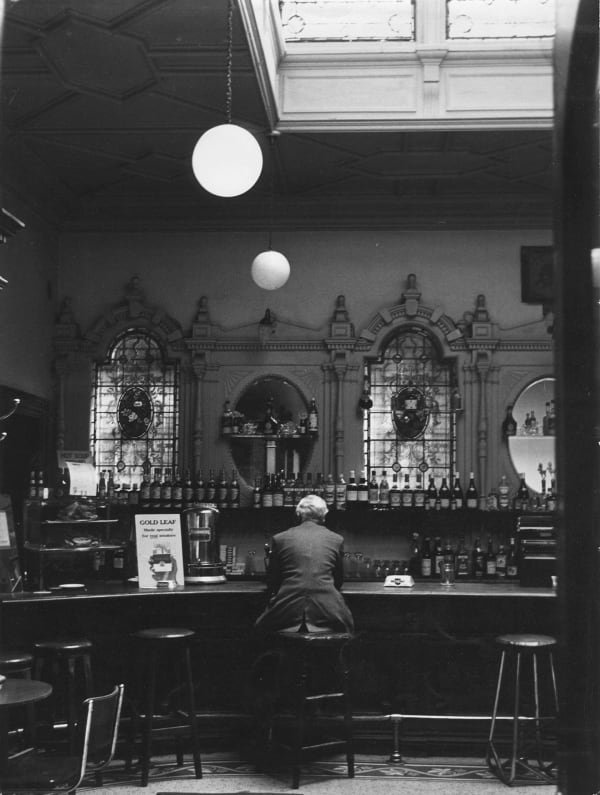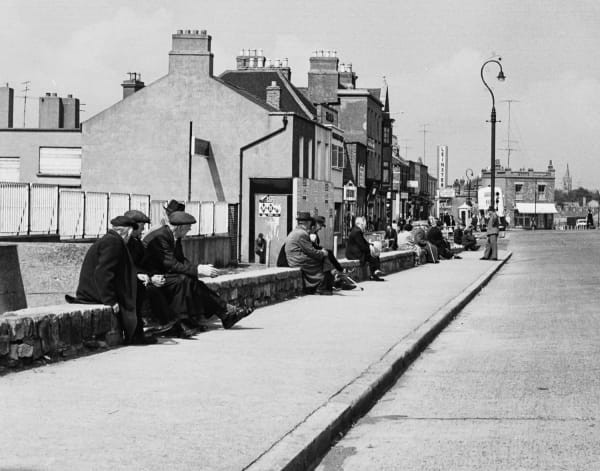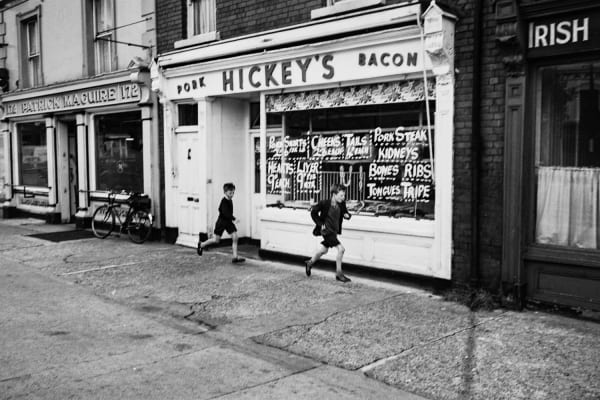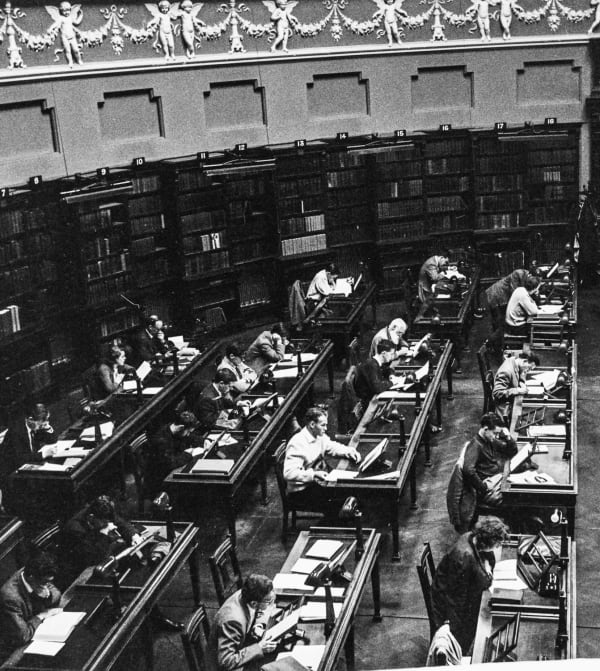"When I die Dublin will be written in my heart" - James Joyce
The Dublin-born photographer Edward Quinn is best known for capturing the lives of celebrities on the Côte d’Azur during the 1950s and 60s and for recording the enduring friendship with Picasso that enabled him to record the artist at work and play over the last two decades of the artist’s life. There have been numerous exhibitions and publications celebrating Quinn’s career but his 1963 photographs of his hometown of Dublin, have not received the attention they deserve.
-
-

Edward Quinn at the Bal de la Rose, Monaco 1956
Image @ Edward Quinn Archive -
The photographer's apprentice years coincided with the rise of the Côte d'Azur as a jet-set destination for film stars, millionaires and royalty, thanks largely to its adoption by Brigitte Bardot and Princess Grace. Quinn worked for Paris Match and a number of agencies, principally Black Star in London and the American International News Service. He was on good terms with many of his celebrity subjects thanks to his attractive personality and was described as "charming, flirtatiously shy, friendly, rarely over-bearing".
-
-
But Quinn’s artistic ambitions lay beyond being a paparazzo. His discretion and charisma enabled a close friendship with Pablo Picasso, who allowed Quinn unfettered access to his working practice and leisure time from 1951 until Picasso’s death in 1973. Quinn went on to photograph a number of important European artists such as Francis Bacon and George Baselitz, with whom he developed a close friendship, photographing Baselitz into the 1980s.
-
Quinn’s photographic legacy is enshrined in his archive, which contains 180,000 negatives alongside thousands of vintage prints as well as the paraphernalia of a working photographer – contact sheets, book dummies and press cuttings. The archive is managed by his heirs who have allowed us access in order to select the group of vintage prints of Dublin that are shown here, many of which are being exhibited for the first time.
-
Edward Quinn
Children in the grounds of a school in Kildare Street, Dublin 1963 Vintage silver gelatin print
Paper Size: 22.7 x 29.7 cm -
Quinn’s Irish identity was important to him and he made numerous visits to Ireland throughout his life. He felt a connection with James Joyce, whose fictional universe centres on the Dublin of his youth and who also left Dublin for Continental Europe as a young man. Quinn began to read Joyce in the 1950s, whilst living in the South of France, and was struck by the parallels between his childhood and the places described by Joyce.
-
 Edward QuinnGrandparents and grandchildren with dog, Portland Row, Dublin 1963Silver gelatin print, printed laterPaper Size: 22.4 x 30.4 cmSigned by Gret Quinn, titled and dated in pencil on verso
Edward QuinnGrandparents and grandchildren with dog, Portland Row, Dublin 1963Silver gelatin print, printed laterPaper Size: 22.4 x 30.4 cmSigned by Gret Quinn, titled and dated in pencil on verso
Artists wet stamp on Verso“I remember having paced and explored the same streets, rambled along the same beaches …. A few years ago I decided to go to Dublin during the early summer and try to catch the flavour and atmosphere of the city and its people. I tried to work in the same way as Joyce himself, using a reportage style, a method he had recorded in Stephen Hero.” - Edward Quinn
Click 'view more details' on the image above to find more literature on this photograph.
-
Edward Quinn
Mulligan's Pub, Butt Bridge, Dublin 1963 Vintage silver gelatin print
Paper Size: 20.4 x 25.8 cm -
Quinn describes how he “rambled around Dublin from dawn until dusk, but instead of catching and noting words and phrases, I caught the little incidents of the people’s daily life and the atmosphere of the places, with a small unobtrusive camera”. These images would eventually be published in Edward Quinn, James Joyce’s Dublin, with selected writings from Joyce’s works, in 1974.
-
 Edward QuinnBoys laughing and smiling, Dublin 1963Vintage silver gelatin printPaper Size: 19.4 x 30.5 cmSigned by Gret Quinn, titled and dated in pencil on verso
Edward QuinnBoys laughing and smiling, Dublin 1963Vintage silver gelatin printPaper Size: 19.4 x 30.5 cmSigned by Gret Quinn, titled and dated in pencil on verso
Artist’s wet stamp on verso -
Each of Quinn’s photographs is accompanied with a passage of text from one of Joyce’s works (which you can read here in the ‘literature’ section which you’ll find when you click each image). The book includes an introductory note by Samuel Beckett who suggests that Quinn “really captures the atmosphere, humour and essence of Joyce’s Dublin. The pictures are fascinating and will certainly aid readers in getting a clearer insight and a fuller understanding of James Joyce’s work”.
-
FEATURED WORKS
-

-
-

-
-

-
SELECTION OF AVAILABLE WORKS
-
All of the prints in this Viewing Room select were taken by Edward Quinn in Dublin during the early summer of 1963. They were hand-printed by the photographer and have a rich tonality that is typical of a photographer who is at one with his medium of choice. Some of the images were included in the 1974 publication and these have accompanying text by Joyce, as selected by Quinn.
-
-
IF YOU WOULD LIKE TO SEE MORE OF edward quinn'S WORK, PLEASE EMAIL US AT
GALLERY@MICHAELHOPPENGALLERY.COM

![Edward Quinn, Dublin 1963 [ Man pulling a cart ]](https://artlogic-res.cloudinary.com/w_600,c_limit,f_auto,fl_lossy,q_auto/artlogicstorage/michaelhoppengallery/images/view/4be03d6c937c600df69a1df42f9991ebj/michaelhoppengallery-edward-quinn-dublin-1963-man-pulling-a-cart.jpg)








